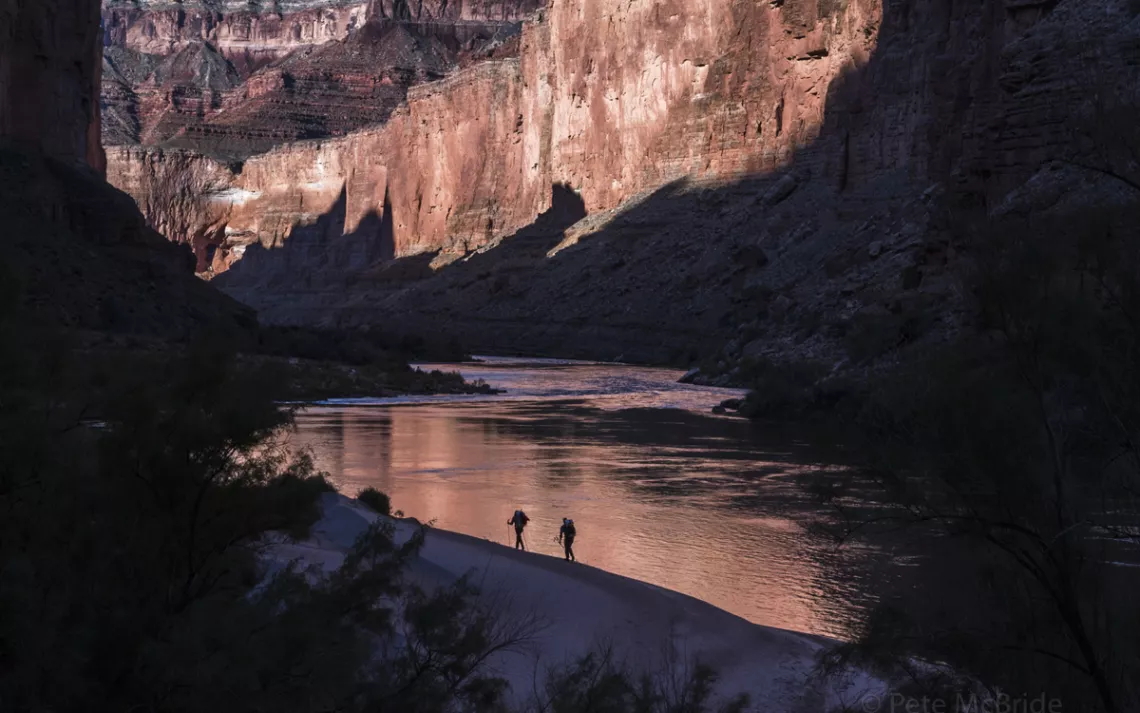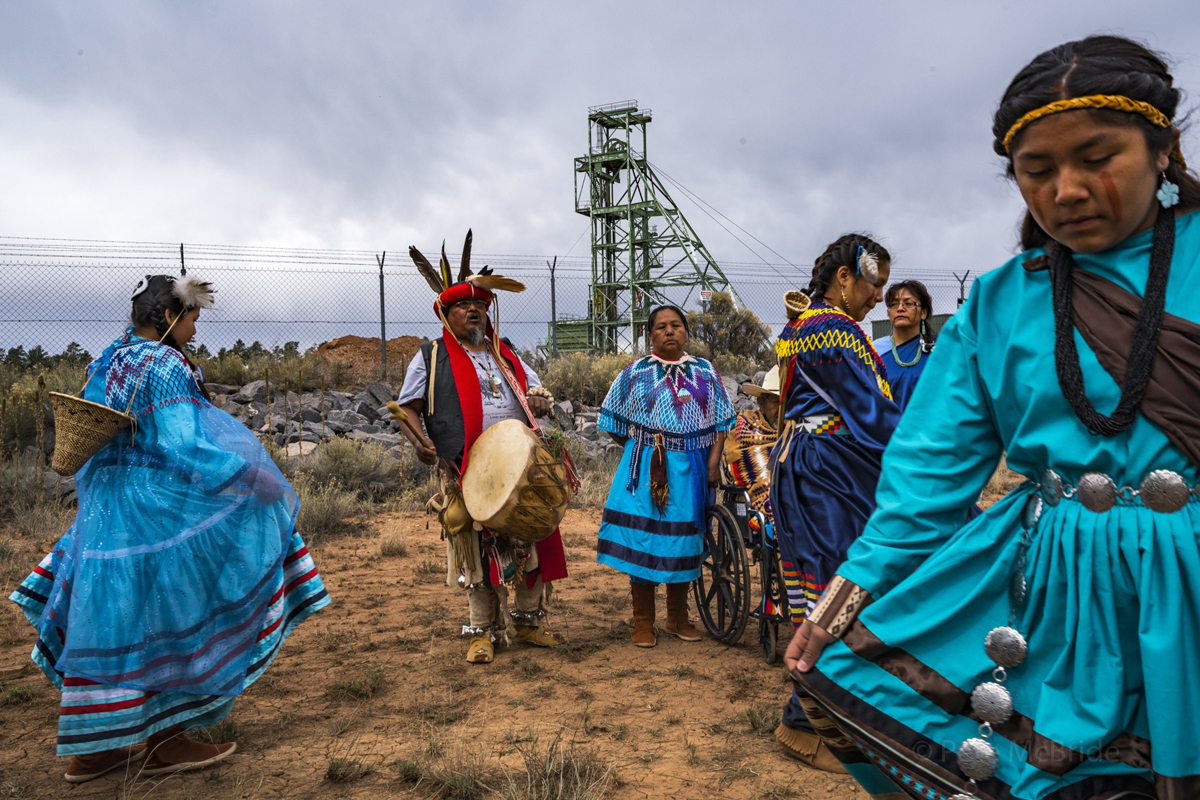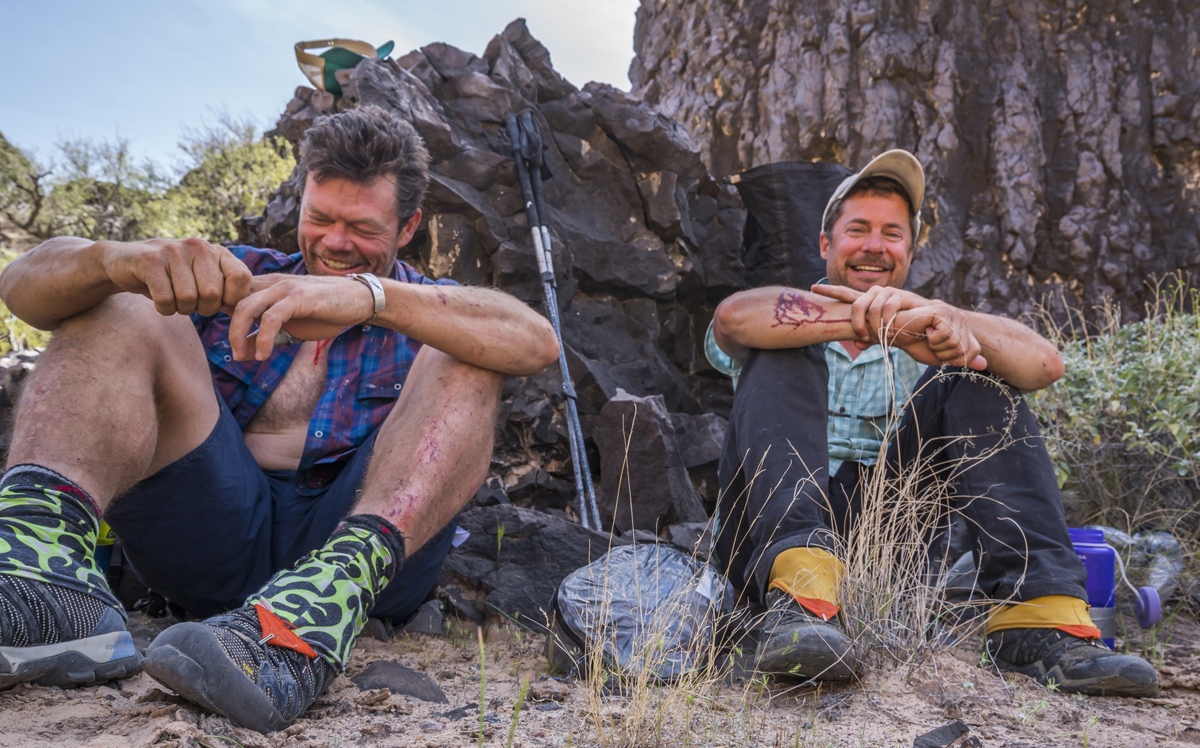Into the Grand Canyon—and Beyond
As the park celebrates 100 years, a new film highlights its looming threats

Photos courtesy of Pete McBride
If familiarity with a landscape encourages one to advocate for its conservation, then journalists Kevin Fedarko and Pete McBride would count as two of the Grand Canyon’s most tireless advocates. Having completed a 750-mile thru-hike of the canyon—in eight stages over the course of a year—the intrepid pair has experienced more of this iconic setting than most of us ever have, or will. One result of that adventure? A feature-length film from McBride, a National Geographic photographer as well as a writer and filmmaker. In conjunction with the Grand Canyon’s centennial as a national park, Into the Grand Canyon makes its national debut tomorrow, February 21, on National Geographic TV. The film already nabbed a director’s award at the Flagstaff Mountain Film Festival and will continue to play at festivals throughout the year under the title Into the Canyon.
“The canyon’s scale is so beyond human comprehension,” says McBride, who directed the film. “That is the thing that captivates me the more time I spend there. And there’s a greater range of biodiversity than in any other national park. It’s a giant living classroom. It’s also incredibly harsh, foreboding, and humbling. The canyon respects nobody.”
In addition to showcasing the park’s transcendent beauty, the film, for which McBride shot most of the footage, effectively conveys three ever-looming environmental threats: development, air traffic, and mining. These disrupters are “symbolic of our relationship with wilderness today,” said McBride during a Q&A in Aspen, Colorado, following the film’s sold-out world premiere screening in early February. “A tug-of-war between access and loving it to death.”
Movie footage engages viewers with mind-blowing images that highlight both the canyon’s massive scale—there are expanses of striated redrock stretching to the horizon, the Colorado a narrow ribbon of silver far below the rim—and its micro environment (viewers experience a desert collared lizard, reflections in a pothole, and the repeated warble of the canyon wren). Once this love affair with the landscape is established, the film introduces the issues putting the Grand Canyon in peril.
Uranium mines in nearby watersheds have already contaminated springs and wells. Even though last October the Supreme Court refused to hear an appeal of a 20-year ban on new uranium claims near the park, the current federal administration may still attempt to lift it. Meanwhile, the Havasupai Tribe and a coalition including the Grand Canyon Trust and the Sierra Club continue a legal fight against the exemption of the operating Canyon Mine, just south of the park, from this ban.
Equally alarming may be the proposed Grand Canyon Escalade, which would bring an amusement-park vibe to what McBride calls “the most wild place in America.” The project proposes a rim-to-river gondola on Navajo Nation land near the confluence of the Colorado and Little Colorado, an area that many tribal members consider sacred. The infrastructure would include hotels and restaurants, stores, a visitor center and museum, and a helipad, and be designed to accommodate up to 10,000 people each day. “We’re trying to offer the average person a below-the-rim experience,” Scottsdale-based developer Lamar Whitmer says during an interview in the film.
McBride details the rifts among citizens of the Navajo Nation, some of whom view the project as an economic savior, while others have formed a group called Save the Confluence to advocate against it. This story thread culminates in a vote by the Navajo Nation Council in October 2017, rejecting the development. But it’s not entirely off the table. Notes McBride, supporters “are working hard to reelect another Navajo council that’s more development-friendly.”

Also mucking up the Grand Canyon’s natural environment: the constant drone of helicopters in a flightseeing section known as Heli Alley, a three-mile stretch of the lower canyon. During the hike, McBride tallied 363 helis in eight hours on an average weekday; now, he says, the number is closer to 400 flights a day. But the Hualapai tribe, which oversees the airport as well as the nearby Skywalk, receives a chunk of needed income from the air tours. “How do you find a balance?” posits McBride in the film.
Which of these threats does he consider the biggest one facing the Grand Canyon right now? Surprisingly, none of them. Instead, “it’s public indifference,” McBride says. “People are more engaged in their screens than in the future of our public lands. They just presume that a national park will stay a park.”
Prior to the Grand Canyon trek, McBride had already photographed the length of the Colorado River for the book The Colorado River: Floating Through Conflict, and Fedarko, who’s a part-time river guide, had penned the critically acclaimed The Emerald Mile about the fastest boat trip down the canyon. Though the two had frequently collaborated on previous assignments in far-flung locales like Everest base camp and Djibouti, nothing had prepared them for the rigors of a hike in their relative backyard—McBride lives in Colorado, Fedarko in Arizona—that only some three dozen people have completed.
Before the Aspen screening, McBride deadpanned that the adventure was “literally a walk in the park.” Some walk, indeed. With 100,000 vertical feet of elevation gain and loss, more than 100 degrees of temperature range, and route-finding along cliffs that plummet thousands of feet—plus very little actual trail—the hike is a near-implausible undertaking. Plus, it almost killed McBride—within the first few days, he came down with an acute case of hyponatremia (severe salt depletion), which forced the two to temporarily exit the canyon and reevaluate their backpack loads and supplies.
The biggest issue was lack of water. That’s because most of the time, the hikers were nowhere near the river itself and had to suss out scarce springs and potholes. The stress of not knowing where the next drink would come from was the most difficult element of the journey, says McBride. “We always knew that water would be a challenge, but I never knew how psychologically daunting it would be,” he explains. “Nobody lives in the US today where you have to think about water like that.”
Aside from merely surviving, McBride was continually shooting images—toggling nonstop between still and video cameras, using artistic instinct to decide which medium to use. The print images first appeared in a 2016 National Geographic article on the adventure written by Fedarko, then in McBride’s large-format book The Grand Canyon: Between River and Rim, released last fall (a portion of proceeds benefit the Grand Canyon Trust).
On some legs of the trip, friends—including adventurer Rich Rudow, who’s completed a continuous thru-hike of the canyon—joined the pair and also took photos. (The additional hikers also helped carry rope for necessary rappels and small pack rafts for occasional river crossings.) Often, though, McBride and Fedarko were alone, which meant one of the trek’s oddest events went uncaptured. “When I got sick at the beginning, there were times where Kevin said that it looked like mice were running around under my skin because I had such bad cramps,” recounts McBride. “But I didn’t have the wherewithal to tell him to pick up the camera.”
 If it all sounds death-defying and serious, it is—to an extent. But the film also has plenty of laugh-out-loud moments, particularly when it comes to the dynamic between the quieter, perhaps more logical Fedarko (right) and the extroverted, game-for-anything McBride (left). When his longtime friend brought up the idea of the thru-hike, Fedarko went all in. But on screen he readily admits, “What I find most frustrating about Pete is his tendency to undersell difficulty.” McBride counters, “It’s an odd-couple friendship, but it’s a good one.”
If it all sounds death-defying and serious, it is—to an extent. But the film also has plenty of laugh-out-loud moments, particularly when it comes to the dynamic between the quieter, perhaps more logical Fedarko (right) and the extroverted, game-for-anything McBride (left). When his longtime friend brought up the idea of the thru-hike, Fedarko went all in. But on screen he readily admits, “What I find most frustrating about Pete is his tendency to undersell difficulty.” McBride counters, “It’s an odd-couple friendship, but it’s a good one.”
Would McBride do the hike again? “I don’t think my body would handle it,” he says without hesitation. “Plus, it took a lot of my personal life.” Fortunately for viewers, Into the Canyon provides a compelling personal narrative, along with a you-are-there visual perspective. The result is a vicarious journey with none of the discomfort yet all of the inspiration.
This article has been updated since publication.
 The Magazine of The Sierra Club
The Magazine of The Sierra Club



